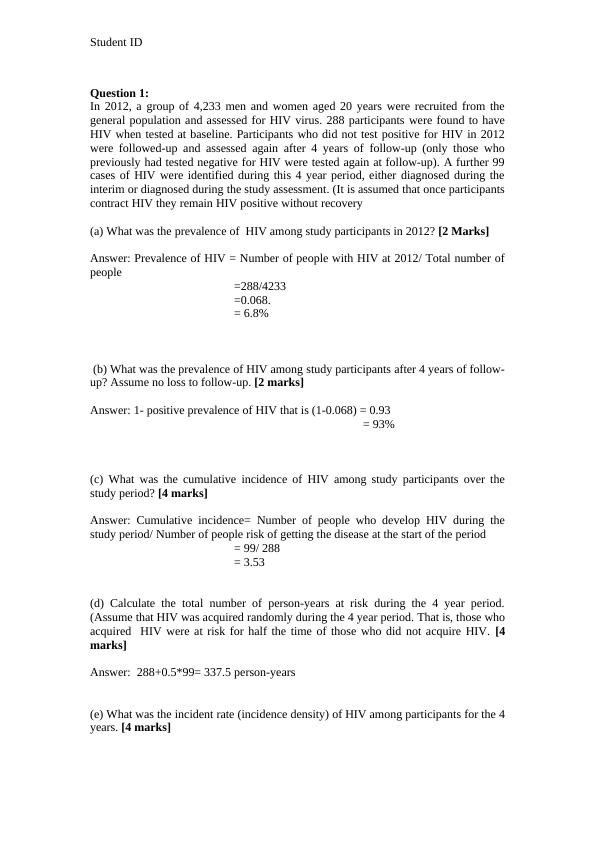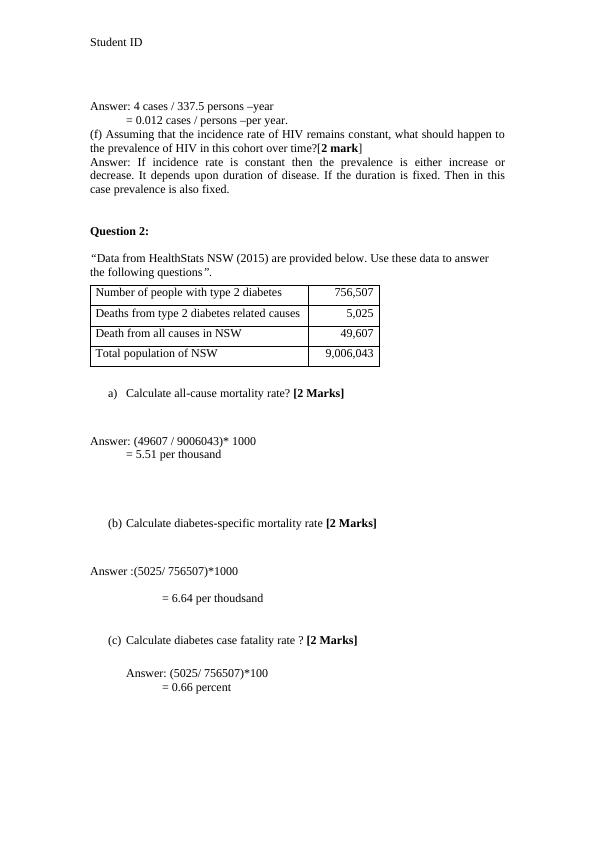Numerical Problem Solving – scenario based calculations
All the topic measures of disease frequency is not clear to you - I think you need to review this thoroughly in order that you can pass the unit =0.00551 9006043 age-specific expected cases you must show you understand what you are doing the Table can be easily generated or copied - this is not an explanation The age- standardised rates also indicate that community B had higher incidence rate of breast cancer than community A, as shown already by comparing the crude, but the differences between the two communities considering the age -standardised seemed much lower (252 versus 56 per 100,000, difference of 152 per 100,000) than the differences between in communities in relation to the crudes incidence, which were 92.8 versus 511 per 100,000, a difference of 418 per 100,000. This is because the age structure
Added on 2022-08-27
Numerical Problem Solving – scenario based calculations
All the topic measures of disease frequency is not clear to you - I think you need to review this thoroughly in order that you can pass the unit =0.00551 9006043 age-specific expected cases you must show you understand what you are doing the Table can be easily generated or copied - this is not an explanation The age- standardised rates also indicate that community B had higher incidence rate of breast cancer than community A, as shown already by comparing the crude, but the differences between the two communities considering the age -standardised seemed much lower (252 versus 56 per 100,000, difference of 152 per 100,000) than the differences between in communities in relation to the crudes incidence, which were 92.8 versus 511 per 100,000, a difference of 418 per 100,000. This is because the age structure
Added on 2022-08-27
End of preview
Want to access all the pages? Upload your documents or become a member.



